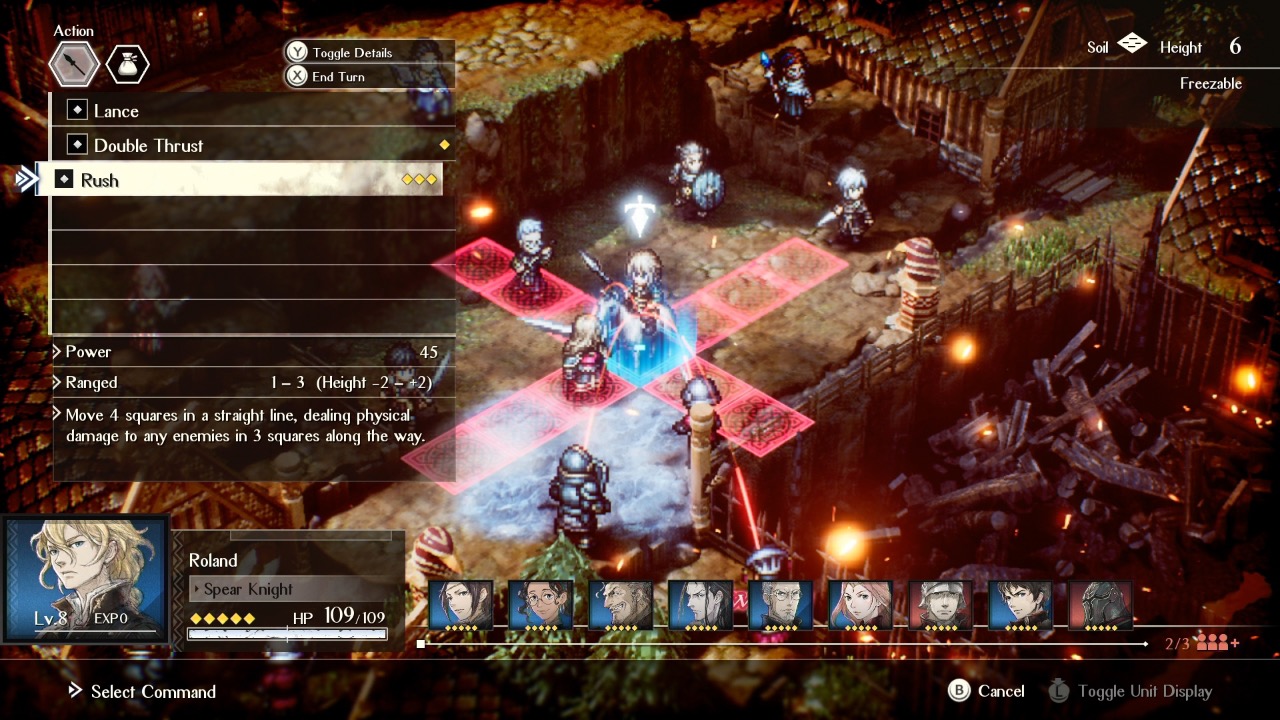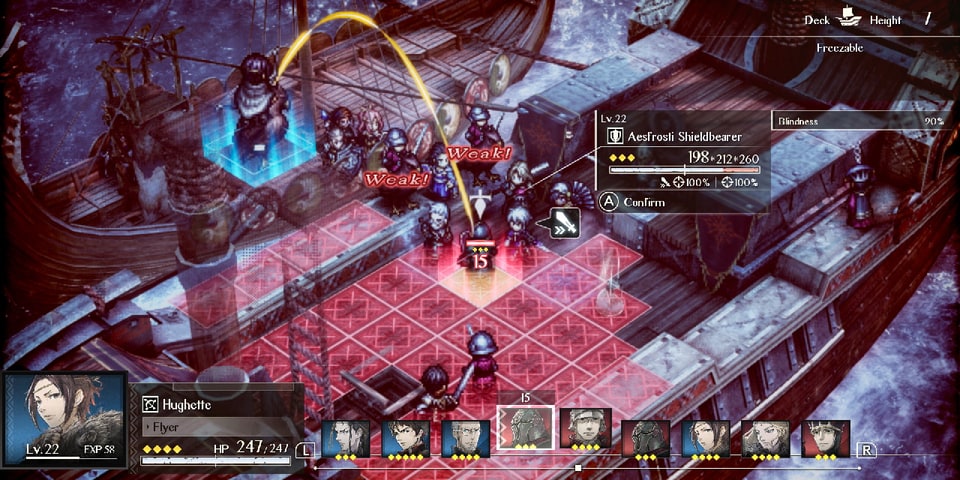Triangles are the most mysterious of all the shapes. From the moment we’re taught the ways of measuring them in maths, our brains are hardwired to treat them as unusual, mystical objects. That’s before we’ve even begun to dig deeper into these three-sided structures by studying the ancient pyramids in history or their modern tea-filled descendants. Square Enix have decided to enact the mysterious energies of the triangle in their latest tactical RPG, and true-to-form Triangle Strategy manages to keep you guessing from start to finish.
Triangle Strategy’s elevator pitch is Final Fantasy Tactics by way of Game of Thrones, and for some, including myself, that was reason enough to be distinctly excited about it. Tie in the fact that it’s coming from the team behind Octopath Traveller, one of the best traditional JRPGs of recent years, and Triangle Strategy had all the hallmarks of being an all-time great. While heritage and a penchant for the greatest games of yesteryear is no guarantee of success, Triangle Strategy absolutely nails the delivery.
Its opening doesn’t necessarily feel like that, though. Your first five hours with the game are worryingly narrative-heavy, and to be completely honest, I wasn’t immediately caught up by the characters I’d met. Set in the land of Norzelia, three great kingdoms, Aesfrost, Glenbrook and Hyzante live in an uneasy peace, one borne from the recent resource-driven Saltiron War.
You take on the role of Serenoa Wolffort, the only son of House Wolffort, one of the three great houses of Glenbrook. He’s betrothed to Frederica, the youngest adoptive sister of Archduke Gustadolph, ruler of the hard-nosed nation of Aesfrost. This mutually beneficial union is soon the least of their concerns when the Aesfrosti invade Glenbrook, looking to secure the lucrative mineral deposits found within a new mine. Where hope was blossoming of a new era of peace and cooperation, conflict swiftly turns it to dust. As you progress, the narrative twists and turns for House Wolffort get increasingly difficult to navigate, especially as you try to hold onto your house’s reputation and sense of justice.

Despite the slow start, I eventually found myself utterly enamoured with Triangle Strategy’s political intrigue, and those Game of Throne narrative comparisons are well earned. Everyone is out for themselves, and death and deception lurk around every corner. There’s multiple endings to reach, and having seen the credits roll I’m now going to work my way through seeing what I could have done differently. Having multiple save slots is certainly going to help with this.
Despite the George R.R. Martin vibes, this isn’t a game of graphic violence, and the development team’s love of the traditional isometric tactical games of yesteryear is clear to see. It’s a beautiful game, its ‘HD-2D’ visuals wringing every ounce of charisma out of the carefully constructed pixels, bringing together memorable characters and intriguing locations that you’ll remember for years to come.
With it proudly sitting within the game’s title, it’s little surprise that strategy plays an integral role here. Fans of games like Final Fantasy Tactics, Fire Emblem, and Disgaea will find Triangle Strategy a perfect fit, and while there’s little here that you’d consider ground-breaking, the developers have constructed an intuitive and enjoyable take on the genre.

Positioning is key to Triangle Strategy, and as you move around each battleground’s grid you receive bonuses for attacks that come from behind and elevated positions, while catching an enemy between two assailants grants you a crucial follow-up attack. Each of your characters fits into a different class, with your starting team made up of well-worn classics like Serenoa’s traditional swordfighter role or Geela’s magical healer.
However, as you progress and your party grows you’ll find some more unique offerings like Lionel, a travelling merchant that can confuse and coerce enemies into joining your cause, or Jens, a blacksmith that can lay traps to catch your enemies unawares. Each of these characters has an additional story to tell, though on occasion I’d have preferred for more playable side stories than simply sitting through short cutscenes.
The central narrative is expansive, but at times it recommends you to be a much higher level than you’d perhaps have arrived at naturally. The Encampment is your saving grace here, with Jens able to upgrade your equipment while the trusty tavern proprietor Hossabara is able to offer you a selection of mental mock battles alongside a flagon of ale. I took to imagining that these imaginary conflicts were the result of one too many beverages, but whichever state you enter into them, you’ll almost certainly come out having improved your character’s stats.

I say ‘almost certainly’, as Triangle Strategy can be a tough tactical trial at times. Even knocking the difficulty down to Easy offers no immediate route to success, and you still need to think carefully about where you’re placing your characters, and timing their attacks. Still, if you’re a fan of the genre, and you’re willing to indulge in a spot of essential grinding, Triangle Strategy offers a challenging and involving slice of tactical action.
- About
- Action
- Additional
- All
- around
- beautiful
- before
- beneficial
- BEST
- Beverages
- Bonuses
- brains
- Catch
- caught
- Cause
- challenging
- characters
- coming
- conflict
- Credits
- delivery
- developers
- Development
- different
- down
- Elevator Pitch
- emblem
- equipment
- essential
- FANTASY
- Fire
- First
- fit
- game
- gameplay
- Games
- George
- grants
- great
- Grid
- having
- here
- history
- hold
- House
- houses
- HTTPS
- i
- Including
- IT
- Justice
- Key
- latest
- Level
- love
- Merchant
- mine
- Modern
- more
- move
- Nintendo
- Nintendo Switch
- offer
- Offerings
- Offers
- opening
- political
- Preview
- receive
- Remember
- review
- Roll
- Route
- saving
- sense
- set
- Short
- Slots
- son
- Soon
- Spot
- square
- Square Enix
- start
- State
- stats
- Stories
- Story
- Strategy
- success
- surprise
- Switch
- tactical
- tactics
- The
- Through
- TIE
- together
- traditional
- treat
- trial
- union
- unique
- unusual
- war
- What
- within
- Work
- years
- youtube











